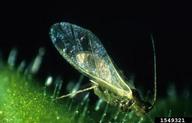
Jim Baker, North Carolina State University, Bugwood.org
tobacco aphid (Myzus nicotianae) adult(s)
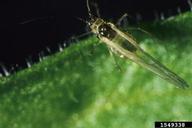
Jim Baker, North Carolina State University, Bugwood.org
tobacco aphid (Myzus nicotianae) adult(s)

Jim Baker, North Carolina State University, Bugwood.org
tobacco aphid (Myzus nicotianae) adult(s)
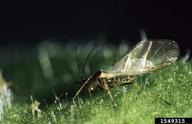
Jim Baker, North Carolina State University, Bugwood.org
tobacco aphid (Myzus nicotianae) adult(s)
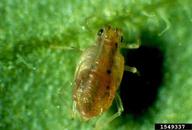
Jim Baker, North Carolina State University, Bugwood.org
tobacco aphid (Myzus nicotianae) adult(s)
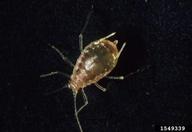
Jim Baker, North Carolina State University, Bugwood.org
tobacco aphid (Myzus nicotianae) adult(s)
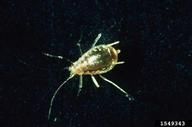
Jim Baker, North Carolina State University, Bugwood.org
tobacco aphid (Myzus nicotianae) adult(s)
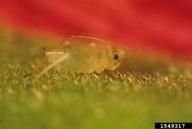
Jim Baker, North Carolina State University, Bugwood.org
tobacco aphid (Myzus nicotianae) adult(s)
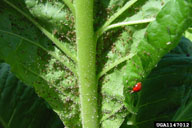
J. Michael Moore, University of Georgia, Bugwood.org
with lady beetle predator
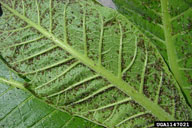
J. Michael Moore, University of Georgia, Bugwood.org
tobacco aphid (Myzus nicotianae) infestation on flue-cured tobacco (Nicotiana tabacum (flue-cured type))

R.J. Reynolds Tobacco Company , Bugwood.org
Aphids have beak-like mouthparts through which they suck plant juices. In addition, they produce a sticky waste product, honeydew, on which sooty mold develop.
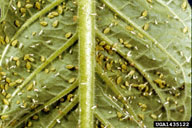
Clemson University - USDA Cooperative Extension Slide Series , Bugwood.org
Aphids or lice as they are commonly called feed on tobacco by sucking the sap from the leaves. They are generally found on the lower surface of the leaves where they multiply extremely fast under favorable conditions. Mostly they have their young alive but at times may lay eggs.